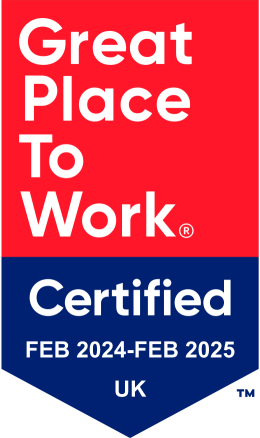17 September 2020 | Blog
The answer to dropping passenger engagement rates
17 September 2020 | Blog
The answer to dropping passenger engagement rates
Has the number of messages you need to communicate with passengers prior to departure become overwhelming? If the answer is “yes”, you’re not alone. Many airlines have come to us recently with concerns that with COVID-19 they’re having to communicate with passengers more than ever, but a rise in messages sent is resulting in a drop in engagement rates.
In our experience, this is caused by three main issues…
1. Siloed messaging
2. Incorrect data
3. A lack of logic
1. Siloed messaging
Does this pattern of passenger communications look familiar to you?
14 days before travel - Marketing message 1
10 days before travel - Marketing message 1 reminder
9 days before travel - Marketing message 1 - abandoned cart
8 days before travel - Marketing message 2
7 days before travel - SSRs
6 days before travel - Marketing message 2 - if not previously engaged
5 days before travel - Baggage allowance upsell
4 days before travel - Marketing message 3
3 days before travel - In-flight entertainment and Wi-Fi
2 days before travel - Pre-departure communications - measures in airport and onboard, hygiene, documentation
36 hours before travel - Online check-in reminder
24 hours before travel - Pre-departure SMS
12 hours before travel - Online check-in reminder SMS
While different teams within your business all have their own objectives and targets to achieve, by treating each message in a siloed way you are cannibalizing your own performance.
The problem with receiving so many different messages is that after a while, your passengers will inevitably switch off. They fear unsubscribing in case they miss something important, but they’re being bombarded with so many different messages that they have unsubscribed mentally, if not physically. And this is why the engagement rates for your pre-departure communications are dropping.
Think operational-first
But now that we need to start making sure passengers have the right documentation, have completed a health test, are aware of quarantine rules, or know about updated health and safety measures onboard and in the airport, we simply cannot afford for passengers to become disengaged with our messaging. This is why it’s so important to help your passengers distinguish between marketing and operational communications.
A lot of the airlines that we work with used to think marketing first and operations second. But flipping the focus has reaped rewards in both areas. When Edelweiss – part of the Lufthansa Group – took this approach it saw an immediate uplift of 100% month on month in ancillary bookings as well as a drop in calls to the contact centre with pre-flight questions.
This also means that even if your passengers opt-out of marketing communications, you can still reach them with important operational information that they can’t afford to miss. Because of our experience in maximizing the impact of pre-departure communications, our customers enjoy open rates as high as 78%* and click-through rates of up to 71%**.
2. Incorrect data
How certain are you that the data you have for your passengers is accurate?
Live data feeds
If you rely on a marketing or CRM database to hold your passengers’ contact details, then it’s likely a significant proportion is out of date. A common challenge with using these types of platforms to send operational communications is that the user downloads data from the reservation system and uploads it into the platform they’re sending the notification from. Ideally, you should be using live data direct from your reservation system, which will be changing all the time. For instance, if you downloaded information from the reservation system even just 24 hours ago, the passenger could well have cancelled their flight – or had it cancelled due to a border closure – and won’t be too happy to receive pre-departure information for a trip they’re not taking.
Missing, or incorrect contact details
Using the 15below platform to send your communications, multiple processes will run automatically to find and amend contact details to ensure you’re maximizing your reach. In fact, we look in 16 different fields to find and validate contact details in real-time. What’s more, if we find a travel agent’s details our algorithms are set up to look in multiple other systems – like your loyalty programme, for instance – to update this information.
3. A lack of logic
If you’re sending vast numbers of communications in the two weeks prior to travel, each promoting a different offering, you will undoubtedly benefit from a sophisticated logic engine that works out which messages should be aggregated together in order to maximise conversion of each of them. But while marketing and CRM systems do play a big role in the upsell strategy, they won’t be able to manage this level of sophistication for you. You can read more about this in our blog post on using the right tool for the job.
The 15below platform integrates with not only your reservation system to pull data from the PNR, but more than 100 internal (e.g. CRM, marketing and loyalty) and third-party systems. This is the only way that you will be able to build an advanced, intelligent view of each passenger that will enable you to treat them all as individuals – the key to engagement in our experience.
Dynamic content
Your aim should be to have one template within which the content dynamically changes depending on who your customer is, where they’re going, and when. Having just one template to work with will eliminate human error as you won’t have infinite variations to manage.
This also means that each passenger will receive information that is relevant to them: They’re not being offered extra baggage allowance that they already paid for on booking, are only being recommended cars that suit the size and demographic of each passenger on the PNR, and they know what forms they need to complete at home before leaving for the airport.
This is backed up by a report by business consultants McKinsey that says, “Today’s personalization leaders have found proven ways to drive 5 to 15 percent increases in revenue and 10 to 30 percent increases in marketing-spend efficiency—predominantly by deploying product recommendations and triggered communications within singular channels."
“Smart personalization and data-driven strategies are no longer good-to-haves for travel brands. Both are essential for success.” Skift
So, if you’re finding your engagement rates are not as high as they used to be – or you know they could be stronger – get in touch and we will be very happy to give you some best-practice advice, or talk you through your options with the 15below platform.
* Edelweiss average open rate - 2019
** Fiji Airways average click-through rate - 2019




